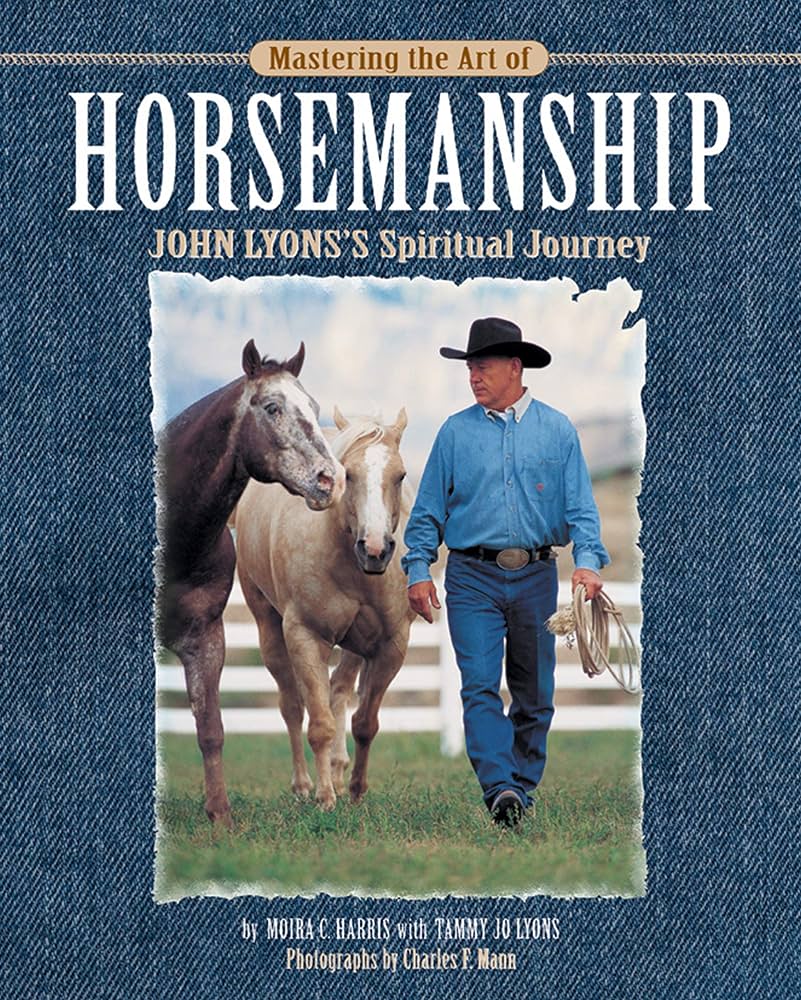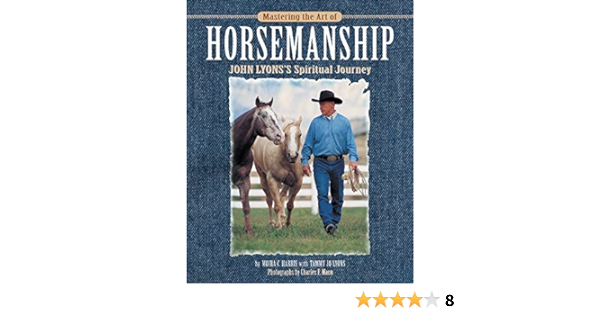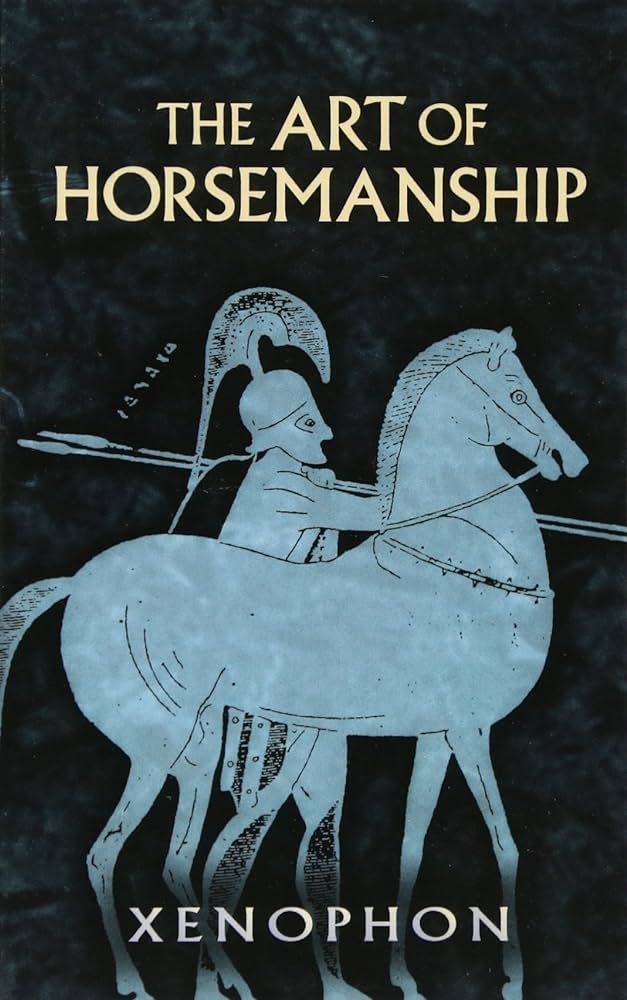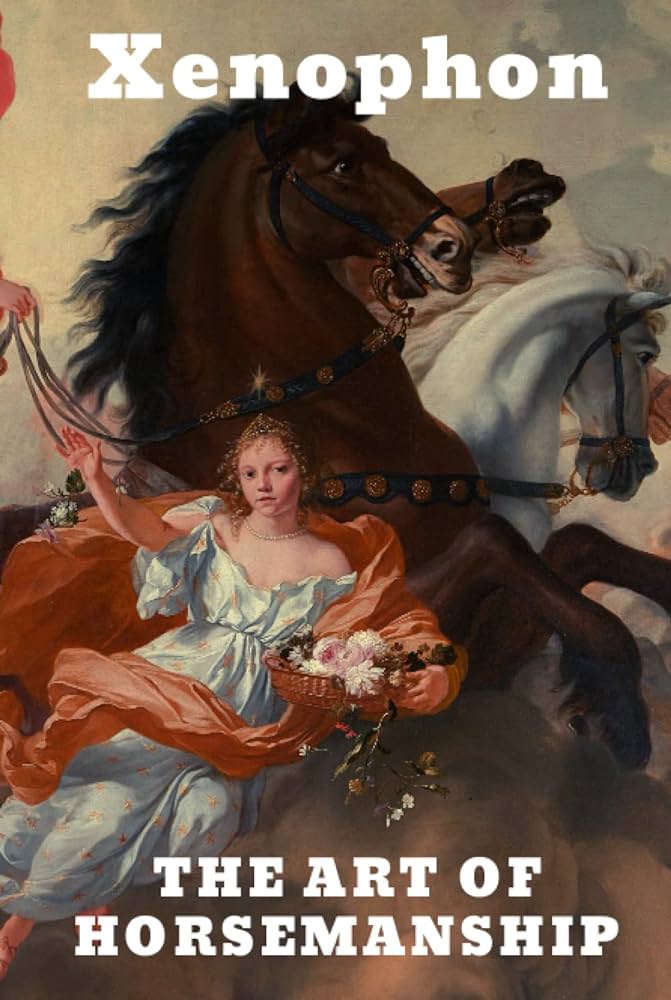If you’re a horse lover or a passionate rider, you know that horsemanship is not just about sitting in a saddle and holding the reins. It’s an art, a delicate dance between you and your equine companion. The key to mastering this art lies in communication, understanding, and building a strong bond with your horse. In this article, we will explore the art of horsemanship and delve into the various aspects of communication that will help you develop a deeper connection with your horse. From subtle cues to body language, we’ll unlock the secrets to effective communication in the world of horseback riding. Get ready to embark on a fascinating journey of discovery as you strengthen your bond with your four-legged partner. Get ready to discover the art of horsemanship!

The Importance of Communication in Horsemanship
Horsemanship is more than just riding a horse. It is about developing a deep and meaningful connection with these magnificent creatures. And at the heart of this connection lies effective communication. Communication is crucial in building trust, respect, and understanding between the horse and the rider. In this article, we will explore the various aspects of communication in horsemanship and how it can enhance our partnership with these amazing animals.
Understanding the Horse’s Language
In order to effectively communicate with a horse, it is essential to understand their language. Horses communicate through a combination of body language, facial expressions, and vocalizations. By observing and interpreting these signals, you can gain valuable insights into how they are feeling and what they are trying to convey.
Building Trust and Respect
Trust and respect are the foundations of any successful relationship, and this holds true for the relationship between a horse and its rider. Trust is built by consistently demonstrating care, understanding, and consideration for the horse’s needs. Respect is earned through fair and consistent leadership. By establishing trust and respect, you create a safe and secure environment for both you and your horse.
Establishing Clear Boundaries
Establishing clear boundaries is essential for maintaining a harmonious partnership with your horse. Horses are herd animals and naturally seek a leader to provide guidance and structure. By setting clear boundaries, you establish yourself as the leader and help your horse understand what is expected of them. Clear boundaries also create a sense of safety and security for the horse, as they know what behavior is acceptable and what is not.
Learning to Listen: Developing the Rider’s Awareness
Effective communication in horsemanship is a two-way street. As a rider, it is crucial to develop your awareness and learn to listen to your horse. This involves recognizing and interpreting their body language and expressions, as well as using your voice commands effectively.
Recognizing Body Language
Horses rely heavily on body language to communicate their emotions and intentions. By becoming attuned to the subtle cues in their body posture, movement, and facial expressions, you can gain valuable insights into their state of mind. For example, a relaxed and loose posture indicates a calm horse, while tension and stiffness may indicate anxiety or discomfort.
Interpreting Equine Expressions
In addition to body language, horses also use facial expressions to convey their emotions. By paying attention to their ears, eyes, and mouth, you can gauge their level of attentiveness, relaxation, fear, or even aggression. For example, pinned-back ears and a tight mouth may indicate aggression, while soft eyes and a relaxed mouth indicate relaxation.
Using Voice Commands
While horses primarily communicate non-verbally through body language, they can also respond to voice commands. By using consistent and clear voice cues, you can communicate specific instructions or requests to your horse. However, it is important to note that voice commands should always be used in conjunction with appropriate body language and reinforcement.
Non-Verbal Communication: Body Position and Signals
Non-verbal communication plays a significant role in horsemanship. Your body position, signals, and aids can convey important messages to your horse and influence their behavior. By understanding and mastering these non-verbal cues, you can effectively communicate your intentions and guide your horse’s movements.
Maintaining a Balanced Seat
Maintaining a balanced seat is essential for clear and effective communication with your horse. Your seat position and posture can influence your horse’s balance and movement. By sitting tall, aligning your body with your horse’s motion, and distributing your weight evenly, you can communicate balance and harmony to your horse.
Controlling Rein Pressure
Rein pressure is another important non-verbal cue that conveys direction and speed to your horse. By maintaining a light and consistent contact with the reins, you can communicate your desired path and speed. Varying rein pressure and cues can help steer, stop, or slow down your horse as needed.
Using Leg Aids
Leg aids are used to communicate lateral and forward movements to your horse. By applying pressure or squeezing with your legs, you can ask your horse to move sideways, increase or decrease their speed, or perform specific movements such as leg yield or shoulder-in. Consistency and clarity in leg aids are crucial for effective communication.
Mastering Weight Distribution
Weight distribution is an often-overlooked aspect of non-verbal communication in horsemanship. By shifting your weight slightly, you can communicate subtle cues to your horse. For example, shifting your weight to one side can indicate a desire to turn or change direction, while shifting your weight forward can encourage your horse to move forward.
Building a Language of Trust and Respect
Building a language of trust and respect is an ongoing process in horsemanship. It involves using reward-based training, positive reinforcement, and understanding the concepts of dominance and submission. By establishing a mutual understanding and a sense of partnership, you can develop a solid foundation for effective communication.
Reward-Based Training
Reward-based training focuses on positive reinforcement and rewarding desired behaviors. By rewarding your horse with praise, treats, or other forms of positive reinforcement when they respond correctly, you encourage them to repeat the behavior. This helps create a positive and motivating learning environment and strengthens the bond between you and your horse.
Positive Reinforcement
Positive reinforcement involves providing a reward or desired outcome after your horse performs a desired behavior. This can be in the form of treats, scratches, or release of pressure. By associating the desired behavior with a positive outcome, you can reinforce good habits and encourage your horse to respond willingly.
Understanding Dominance and Submission
Understanding the concepts of dominance and submission is crucial in building a language of trust and respect. Horses have a natural hierarchical structure, and as the rider, it is important to establish yourself as the leader in a fair and consistent manner. This does not mean using force or aggression but rather setting and enforcing boundaries and providing clear direction.
Establishing Mutual Ground
Establishing mutual ground means creating an environment where both you and your horse feel safe, respected, and understood. It involves finding a balance between asserting your authority as a leader and listening to your horse’s needs and preferences. By creating a partnership based on mutual trust and respect, you can develop a strong and effective language of communication.

Establishing Clear Boundaries and Leadership
Clear boundaries and leadership are essential for a successful partnership with your horse. By setting personal space limits, teaching basic ground manners, and developing a consistent routine, you can establish yourself as a leader while fostering respect and understanding.
Setting Personal Space Limits
Setting personal space limits is crucial for ensuring both your safety and your horse’s safety. By establishing a zone of personal space around you, you communicate to your horse that they must respect your boundaries. This helps prevent crowding, pushing, or other behaviors that may lead to accidents or injury.
Teaching Basic Ground Manners
Teaching basic ground manners is an important step in establishing clear boundaries and respectful communication. This includes teaching your horse to stand still, lead calmly, load onto trailers, and respect your space. Consistency and patience are key in this process, as it may take time for your horse to understand and adapt to the desired behaviors.
Developing a Consistent Routine
Consistency is key in the development of clear boundaries and leadership. By following a consistent routine in your interactions with your horse, you establish a sense of predictability and security. Horses thrive on routine, and by providing them with a structured environment, you can foster a sense of trust and confidence.
Progressing through the Levels: From Basic to Advanced Communication
Communication in horsemanship is an evolving process. As you and your horse gain experience and develop a solid foundation, you can progress from basic to advanced communication techniques. This involves developing a solid foundation, advancing your groundwork skills, transitioning to riding under saddle, and polishing advanced riding techniques.
Developing a Solid Foundation
A solid foundation is the building block of advanced communication. This includes mastering the basics such as leading, haltering, grooming, and general ground manners. By establishing a strong foundation on the ground, you create a solid framework for future communication.
Advancing Groundwork Skills
Groundwork skills play a vital role in establishing clear communication and developing trust. This includes exercises such as lunging, long-lining, and desensitization. Advanced groundwork techniques can help improve your horse’s responsiveness, balance, and overall communication.
Transitioning to Under Saddle
Transitioning from groundwork to riding under saddle requires a different set of skills and communication techniques. This includes mastering the basics of riding, such as proper position and balance, using leg and rein aids effectively, and understanding how to communicate with your horse while in motion.
Polishing Advanced Riding Techniques
Once you have mastered the basics, you can begin to focus on polishing advanced riding techniques. This may include refining your seat and position, mastering the use of subtle aids, and developing a deeper connection with your horse through more advanced maneuvers and exercises.

The Role of Patience and Consistency
Patience and consistency are essential elements in the process of developing effective communication with your horse. Learning takes time, and every horse is unique in their learning pace and preferences. By understanding the learning process, developing a training plan, recognizing and addressing challenges, and maintaining consistent communication, you can make progress and strengthen your partnership.
Understanding the Learning Process
Understanding the learning process is key to maintaining patience and perspective. Horses learn through repetition, consistency, and reinforcement. Some horses may pick up new skills quickly, while others may require more time and repetition. By being patient and allowing your horse to learn at their own pace, you can foster a positive and productive learning environment.
Developing a Training Plan
A training plan provides structure and guidance in your journey towards effective communication. It involves setting clear goals, breaking them into achievable steps, and creating a timeline for progression. A training plan helps you stay focused, organized, and consistent in your communication with your horse.
Recognizing and Addressing Challenges
Challenges are a natural part of the learning process. Horses may encounter obstacles, fears, or physical limitations that can affect their progress. By recognizing and addressing these challenges with patience and understanding, you can help your horse overcome them and maintain their trust and confidence.
Maintaining Consistent Communication
Consistency is the key to effective communication. This applies to both your actions and your cues. By being consistent in your expectations, cues, and reinforcement, you create a clear and predictable communication system for your horse. This consistency helps build trust and confidence in your partnership.
Fine-Tuning Communication: Understanding Individual Differences
While there are general principles of communication in horsemanship, it is important to recognize and understand the individual differences among horses. Factors such as breed, temperament, and physical abilities can influence how a horse communicates and responds to cues. By tailoring your training methods and adapting to each horse’s unique needs, you can enhance your communication and strengthen your partnership.
Considering Horse Breed and Temperament
Breed and temperament can have a significant impact on how a horse communicates. Some breeds are naturally more reactive or sensitive, while others may be more laid-back or independent. By understanding the characteristics of different breeds and temperaments, you can adapt your communication style to better suit the individual horse.
Tailoring Training Methods
Effective communication requires flexibility and adaptability in your training methods. While there are general principles that apply to all horses, it is important to tailor your training approach to suit the specific needs and preferences of your horse. This may involve adjusting the intensity, pace, or focus of your training sessions.
Adapting to Horse’s Physical Abilities and Limitations
Physical abilities and limitations can influence how a horse responds to communication cues. For example, a horse with limited mobility may require different aids or strategies to perform certain movements. By understanding and acknowledging your horse’s physical abilities and limitations, you can adapt your communication to ensure their comfort and safety.

Building a Partnership: Communication in Riding Disciplines
Communication in riding disciplines goes beyond the basics of horsemanship. Different disciplines, such as dressage, jumping, western riding, trail riding, endurance riding, cross-country, and reining, require specific communication skills and techniques. By understanding the unique demands of each discipline and honing your communication accordingly, you can excel in your chosen riding discipline.
Dressage
Dressage is often referred to as the “art of riding.” It focuses on developing precision, harmony, and communication between horse and rider. Dressage requires subtle and precise cues, as well as a high level of collection, extension, and lateral movements. Effective communication is crucial in achieving balance, impulsion, and suppleness in the horse’s movements.
Jumping
Jumping requires clear communication and precise timing to navigate obstacles safely and efficiently. Effective communication involves establishing the appropriate speed, rhythm, and balance, as well as providing clear cues for take-off and landing. Building trust and understanding between the horse and the rider is essential for successful jumping.
Western Riding
Western riding emphasizes a relaxed and balanced seat, working in harmony with the horse. Effective communication in Western riding involves clear and subtle cues through rein, leg, and weight aids. It also focuses on developing responsiveness and lightness in the horse’s movements, particularly in disciplines such as reining and cutting.
Trail Riding
Trail riding requires a different set of communication skills, as you navigate various terrains and encounters on the trail. Effective communication includes clear cues for direction, speed, and obstacles, as well as establishing trust and confidence in your horse’s ability to handle different situations. Trail riding also emphasizes effective communication with other riders and horses in a group setting.
Endurance Riding
Endurance riding demands effective communication and partnership over long distances and challenging terrain. Clear cues for speed, rhythm, and hydration are crucial, as well as maintaining a balance between maintaining a competitive pace and preserving the horse’s well-being. Effective communication also involves monitoring and responding to the horse’s physical and mental state throughout the ride.
Cross-Country
Cross-country riding requires effective communication and trust as you navigate complex and challenging cross-country courses. Clear cues for speed, balance, and accuracy are essential, as well as the ability to make quick decisions and adjustments on the go. Effective communication in cross-country riding involves building confidence and partnership with your horse to safely navigate obstacles and challenging terrain.
Reining
Reining is a discipline that showcases the highest level of communication and partnership between horse and rider. It requires precise and subtle cues for various maneuvers such as spins, sliding stops, and rollbacks. Effective communication in reining involves building trust, responsiveness, and finesse through clear and consistent cues.
Developing a Language: Long-Term Relationship and Communication
Long-term relationships with horses offer an opportunity to deepen the connection and continuously improve communication. Through continued training and education, exploring new challenges, and adapting to the rider’s growth and development, you can establish a language that transcends words and creates a profound bond.
Deepening Connection and Trust
Deepening connection and trust is an ongoing process in any long-term relationship. This involves spending quality time with your horse, understanding their individual preferences and needs, and continuously reinforcing the partnership through clear communication and mutual respect. By investing time and effort, you can build a bond that goes beyond words and creates a deep connection.
Continued Training and Education
Continued training and education are essential for enhancing communication in a long-term relationship with your horse. This involves seeking guidance from experienced trainers, attending clinics or workshops, and continuously expanding your knowledge and skill set. By investing in your own education, you can become a more effective communicator and advocate for your horse’s well-being.
Exploring New Challenges
Exploring new challenges is a way to further strengthen communication and deepen the bond with your horse. This may involve trying new disciplines, participating in competitions or shows, or embarking on new riding adventures. By stepping outside of your comfort zone and challenging yourself and your horse, you can push the boundaries of your communication and grow together as a team.
Adapting to Rider’s Growth and Development
As a rider grows and develops, their communication needs and abilities may change. It is important to continually assess and adapt your communication style to accommodate your own growth, as well as your horse’s needs. This may involve refining your cues, deepening your understanding of your horse’s individuality, and adapting your training methods to ensure a harmonious and effective partnership.
In conclusion, effective communication is the key to a successful and fulfilling partnership with your horse. It involves understanding the horse’s language, developing the rider’s awareness, mastering non-verbal communication, and building a language of trust and respect. It requires patience, consistency, and adaptability to individual differences. By continuously honing your communication skills and deepening your connection, you can experience the true art of horsemanship.

